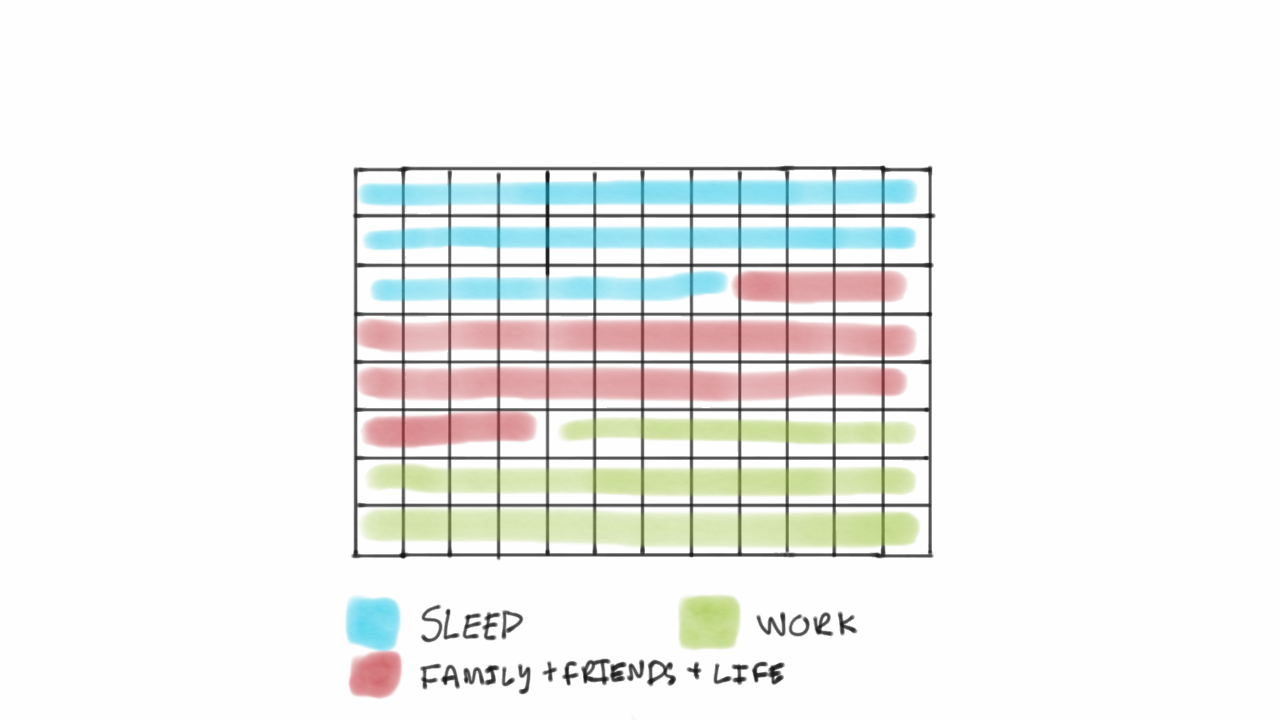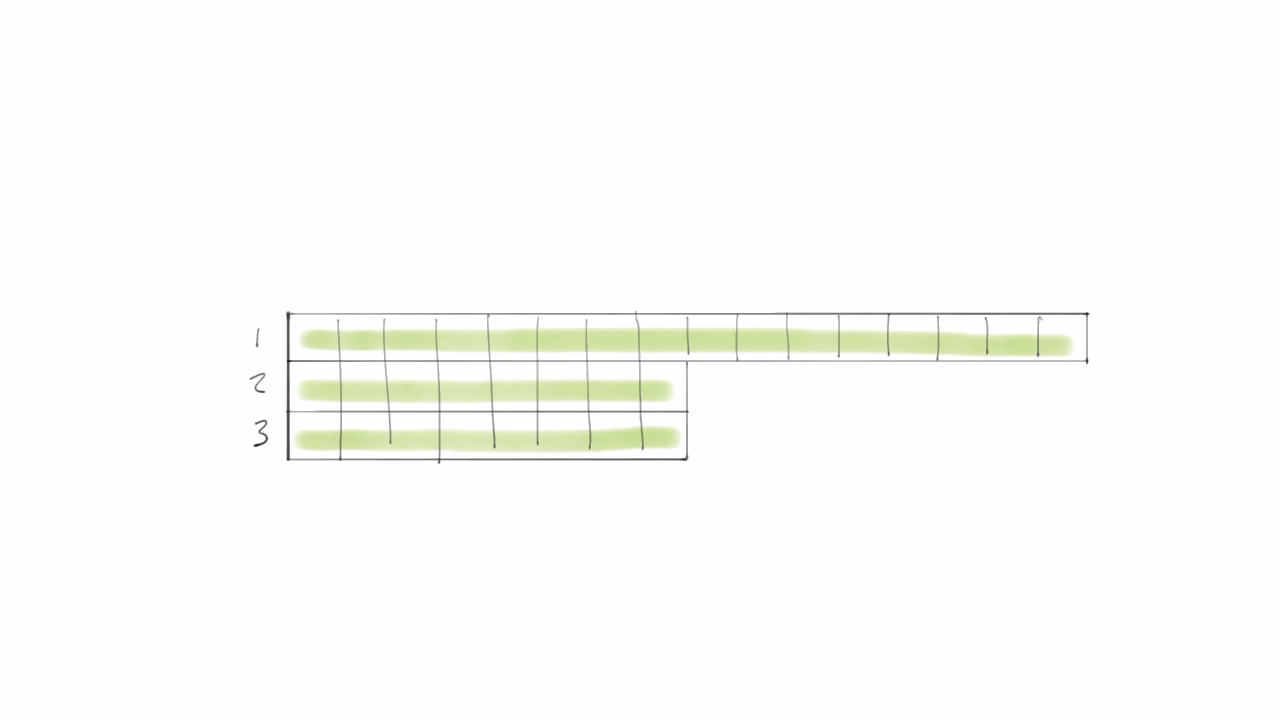The key to better results isn’t working harder. Most of us already work long hours. The problem is we don’t always work smart.
We all have the same amount of time each day to invest. What differentiates us is how we invest that time toward our goals. The best results come when we concentrate our effort in one direction.
The Talent Gap
It’s natural to think that people who get better results than us are simply more talented. The problem is that it’s not true.
What seems like a difference in talent often comes down to a difference in focus. Results come when you focus on one thing for an uncommonly long period of time. Focus is what turns good performers into great performers.
That’s not to say talent doesn’t matter. It does.
There are two types of talent: natural and chosen. Natural talent needs no explanation. Some people are just better than others are certain things. Ignoring physical talent, naturally talented people in the workplace can write a great essay, sell, or smooth talk.
A lot of people rest on natural talent. Since it comes easy they don’t develop the work habits necessary to get keep getting better. As a result, naturally talented people are often passed by people who choose talent.
How can you choose talent?
Results follow obsession. When you commit all of your energy in one direction for an uncommonly long period of time, you develop talent. The more you apply that talent, the better your results.
If that’s all it takes, why aren’t more people talented?
The choices required to develop talent are simple but not easy. In order to apply most of your energy in one direction, you have to say no to things that a lot of other people say yes to.
Most successful people are masters at eliminating the unnecessary from their lives.
The French writer Antoine de Saint-Exupéry hit on the same idea, writing in his memoir, “Perfection is finally attained not when there is no longer anything to add, but when there is no longer anything to take away.”
So many of us are focused on adding when we should be focused on eliminating.
Choosing What to Focus On
Here’s one method to help you choose what to focus on and how to use your time.

Step 1: Change how you think about your day.
Think of your day as having 96 blocks of energy, with each block being a 15-minute chunk of time (four blocks per hour × 24 hours = 96). A week has 672 blocks, and a year has 34,944.
Not all of those blocks are productivity blocks. In fact if you try to make too many of the productive, it becomes counter-productive.
Sleeping for eight hours uses 32 blocks of your 96-block day.
Let’s say that another 32 blocks go toward family, friends, community, spirtuatliy, and general life stuff.
That leaves 32 blocks for you to use at work.

Common wisdom suggests that you need to work longer to get better results. The problem is longer hours zap you of your time and energy. Which makes you less productive not more.
Can’t I just sleep less and get more done? No. Sleep has a way of affecting your other blocks. When you get enough sleep you get a tailwind you can use on the other 64 blocks. When you don’t get enough sleep, you face a headwind for the other 64 blocks.
Almost all consistently successful people make sleep a priority. In fact most are obsessed with sleep.
Step 2: Write a list of all the goals you have.
When I did this, I stopped at 100 and I could have kept going. I would venture to guess that if you sat alone for half an hour, you’d come up with just as many. Writing them down not only frees up your mind from keeping track of them but also gives you a visual representation of just how many things you want to do.
Step 3: Circle your top three goals.
Take your time; there’s no need to rush. It’s hard to narrow them down, which is why so few of us think about these things consciously.
Step 4: Eliminate everything else.
This is where things get interesting. When it comes to the 32 blocks of work time you have to allocate, everything that’s not on your top-three list should be dropped. You can pick up the “everything-else” list after you’ve achieved a goal, but until then it’s what Warren Buffet calls your “avoid-at-all-costs” list.
The Power of Focus
Let’s look at an example. Say we’re working on 10 projects. We have priorities that we try to focus on, but we also give the other projects a decent effort. Let’s say we allocate our 32 blocks of energy to our 10 projects as follows:

1. 10
2. 5
3. 5
4. 3
5. 2
6. 2
7. 2
8. 1
9. 1
10. 1
Not bad, eh? But if we do the above exercise, it will look more like this:

1. 16
2. 8
3. 8
Focus directs your energy toward your goals. The more focused you are, the more energy goes toward what you’re working on. The more energy that goes toward your goals, the better your results.
Eliminating things that you care about is hard. You have to make tradeoffs. If you can’t make those tradeoffs, you’re not going to get far. The cost of not being focused is high.
The direction you’re going in is important to the extent that you’re applying energy to it. If you’re focusing your energy on 10 goals, you’re not focused, and instead of having a few completed projects, you have numerous unfinished projects. Like Sisyphus, you’re constantly getting halfway up the mountain but never reaching the top. I can’t think of a bigger waste of time.
It’s not about working harder to get better results. You have only so much energy to apply. Pick what matters. Eliminate the rest.
